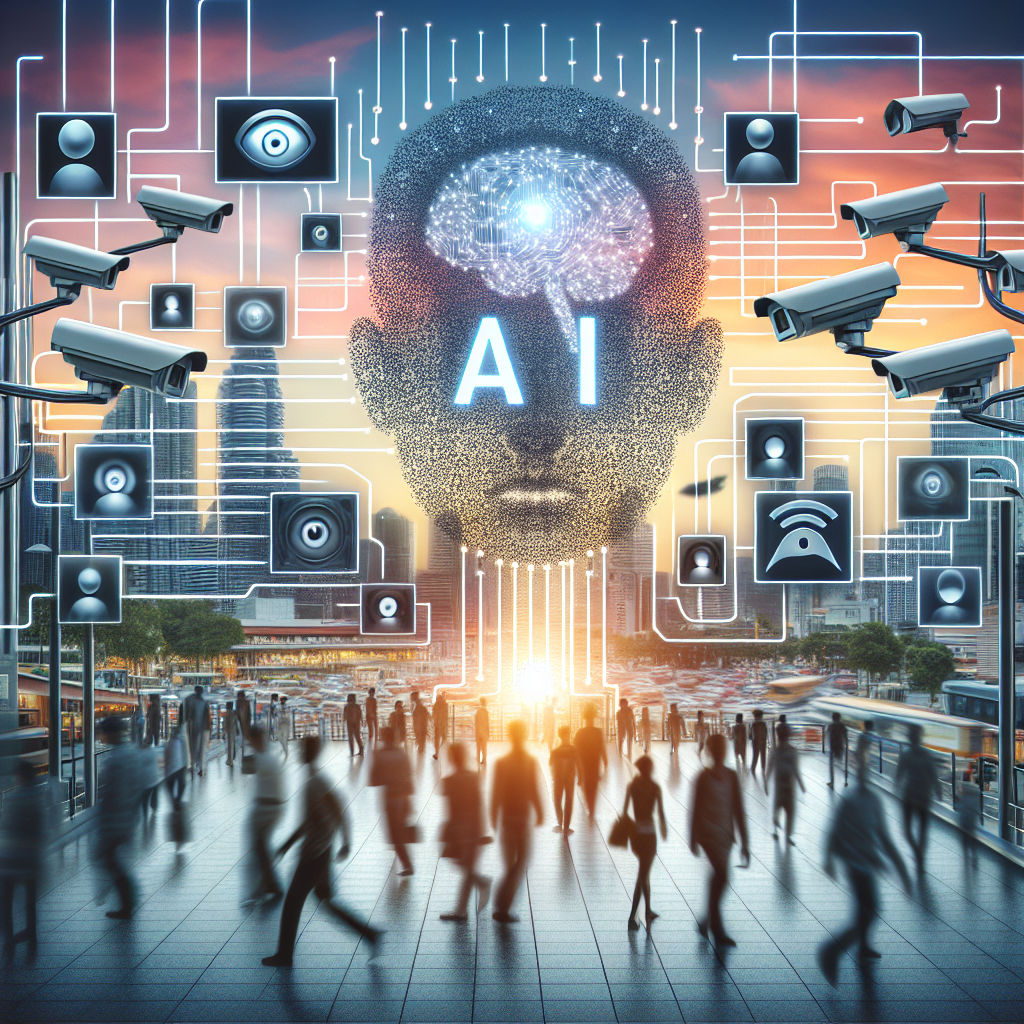Addressing the growing concerns of AI surveillance in public spaces
In recent years, the use of artificial intelligence (AI) in surveillance systems has become increasingly prevalent. From facial recognition technology to automated tracking systems, AI is being used in public spaces to monitor and track individuals for various purposes. While these advancements have the potential to enhance security and improve efficiency in public spaces, they also raise important ethical and privacy concerns that must be addressed.
The use of AI surveillance in public spaces has sparked a debate over the balance between security and privacy. Proponents argue that these systems can help law enforcement agencies prevent crime, identify suspects, and improve public safety. For example, facial recognition technology can be used to quickly identify individuals in crowded places, helping law enforcement respond to potential threats more effectively. Similarly, automated tracking systems can monitor traffic patterns and pedestrian movements, allowing city planners to optimize infrastructure and improve public transportation systems.
However, critics have raised concerns about the potential for abuse and misuse of AI surveillance systems. There are fears that these technologies could be used to infringe on individual privacy rights, track individuals without their consent, or discriminate against certain groups based on race, gender, or other factors. For example, there have been cases where facial recognition technology has been found to be less accurate when identifying individuals with darker skin tones, leading to concerns about bias and discrimination. Additionally, there are worries that the data collected by AI surveillance systems could be vulnerable to hacking or misuse by unauthorized parties.
To address these concerns, it is important for policymakers, technology companies, and civil society organizations to work together to establish clear guidelines and regulations for the use of AI surveillance in public spaces. This includes ensuring that these systems are transparent, accountable, and subject to oversight to prevent abuse and protect individual rights. For example, there should be clear policies in place regarding the collection, storage, and use of data obtained through AI surveillance systems, as well as mechanisms for individuals to access and correct any inaccuracies in their personal information.
Furthermore, there needs to be ongoing dialogue and engagement with the public to educate them about the potential risks and benefits of AI surveillance in public spaces. This includes explaining how these technologies work, what data they collect, and how that data is used to ensure public trust and confidence in the systems. It is also important to involve diverse stakeholders, including privacy advocates, civil liberties groups, and marginalized communities, in the development and implementation of AI surveillance systems to ensure that their concerns and perspectives are taken into account.
In addition to regulatory and policy measures, there are also technical solutions that can help address the privacy and security risks associated with AI surveillance in public spaces. For example, encryption techniques can be used to protect the data collected by these systems from unauthorized access, while anonymization methods can help prevent the identification of individuals based on their personal information. Similarly, algorithms can be designed to minimize bias and discrimination in AI surveillance systems by ensuring that they are trained on diverse and representative datasets.
Overall, addressing the growing concerns of AI surveillance in public spaces requires a multi-faceted approach that combines regulatory, technical, and social measures to ensure that these systems are used responsibly and ethically. By working together to establish clear guidelines, engage with stakeholders, and implement safeguards, we can harness the potential of AI surveillance to enhance security and efficiency in public spaces while protecting individual rights and privacy.
FAQs:
1. What is AI surveillance in public spaces?
AI surveillance in public spaces refers to the use of artificial intelligence technologies, such as facial recognition, automated tracking, and predictive analytics, to monitor and track individuals in areas accessible to the public. These systems are often used by law enforcement agencies, city planners, and private companies to enhance security, improve efficiency, and optimize infrastructure in public spaces.
2. What are the potential benefits of AI surveillance in public spaces?
Proponents argue that AI surveillance in public spaces can help prevent crime, identify suspects, and improve public safety by quickly identifying individuals in crowded places, monitoring traffic patterns, and optimizing infrastructure. These systems can also help law enforcement agencies respond to potential threats more effectively and assist city planners in improving public transportation systems.
3. What are the concerns and risks associated with AI surveillance in public spaces?
Critics have raised concerns about the potential for abuse and misuse of AI surveillance systems, including infringement on individual privacy rights, tracking individuals without their consent, and discrimination based on race, gender, or other factors. There are also worries about the accuracy of these technologies, vulnerability to hacking, and potential for bias and discrimination in the data collected by these systems.
4. How can we address the concerns of AI surveillance in public spaces?
To address these concerns, it is important for policymakers, technology companies, and civil society organizations to work together to establish clear guidelines and regulations for the use of AI surveillance in public spaces. This includes ensuring that these systems are transparent, accountable, and subject to oversight, as well as engaging with the public to educate them about the risks and benefits of these technologies. Additionally, technical solutions such as encryption, anonymization, and algorithmic transparency can help address the privacy and security risks associated with AI surveillance.
In conclusion, addressing the growing concerns of AI surveillance in public spaces requires a collaborative effort that combines regulatory, technical, and social measures to ensure that these systems are used responsibly and ethically. By working together to establish clear guidelines, engage with stakeholders, and implement safeguards, we can harness the potential of AI surveillance to enhance security and efficiency in public spaces while protecting individual rights and privacy.

